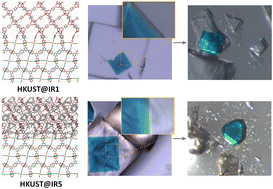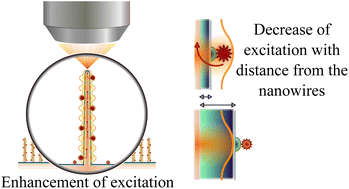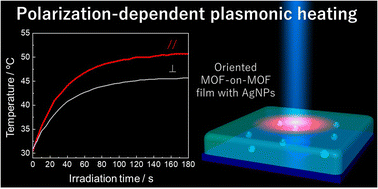Themed collection Epitaxial growth of nanostructures and their properties

Introduction to Epitaxial growth of nanostructures and their properties
Professor Jin Zou introduces the Nanoscale Advances themed collection on Epitaxial growth of nanostructures and their properties.

Nanoscale Adv., 2023,5, 3129-3130
https://doi.org/10.1039/D3NA90054A
Recent advances in epitaxial heterostructures for electrochemical applications
The advances in epitaxial heterostructure design for electrochemical applications are summarized.

Nanoscale Adv., 2023,5, 313-322
https://doi.org/10.1039/D2NA00710J
Epitaxial growth of crystal phase quantum dots in III–V semiconductor nanowires
This review summarizes the epitaxial growth of crystal phase quantum dots in nanowires in terms of basic concepts, control of the crystal phase in the axial direction, shell growth in the radial direction and optical and electronic properties.

Nanoscale Adv., 2023,5, 1890-1909
https://doi.org/10.1039/D2NA00956K
Epitaxial growth of 1D GaN-based heterostructures on various substrates for photonic and energy applications
This review article focuses on the synthesis of 1D GaN nanowires and shell/core heterostructures using vapor–liquid–solid (VLS) and vapor–solid (VS) growth modes with MOCVD on various substrates for energy conversion and LED applications.

Nanoscale Adv., 2023,5, 1023-1042
https://doi.org/10.1039/D2NA00711H
Complications in silane-assisted GaN nanowire growth
Understanding the growth mechanisms of III-nitride nanowires is of great importance to realise their full potential.

Nanoscale Adv., 2023,5, 2610-2620
https://doi.org/10.1039/D2NA00939K
Effect of steric hindrance on the interfacial connection of MOF-on-MOF architectures
This work investigates how the interfacial strain effects occur in an interface of a MOF-on-MOF. The series of synthetic experiments and computational results revealed the importance of the proximity in each chemical connection point in a MOF-on-MOF system.

Nanoscale Adv., 2023,5, 2111-2117
https://doi.org/10.1039/D2NA00790H
Fluorescence excitation enhancement by waveguiding nanowires
Fluorescence excitation enhancement is important for biosensing; we for the first time study it quantitatively for GaP NWs.

Nanoscale Adv., 2023,5, 1760-1766
https://doi.org/10.1039/D2NA00749E
Polarization-dependent plasmonic heating in epitaxially grown multilayered metal–organic framework thin films embedded with Ag nanoparticles
Polarization-dependent plasmonic heating by lasers in a multilayered metal–organic framework (MOF-on-MOF) oriented film embedded with silver nanoparticles, paving the way for MOF-based thin-film devices with temperature-controllable electrical and optical properties.

Nanoscale Adv., 2023,5, 1795-1801
https://doi.org/10.1039/D2NA00882C
Wafer-scale integration of GaAs/AlGaAs core–shell nanowires on silicon by the single process of self-catalyzed molecular beam epitaxy
Optically efficient GaAs/AlGaAs core–shell nanowires on 2-inch Si wafers before (front right) and after (others) growth. The samples show a dark-colored feature indicating light absorption on the substrate surface.

Nanoscale Adv., 2023,5, 1651-1663
https://doi.org/10.1039/D2NA00848C
Atomic scale insights into the epitaxial growth mechanism of 2D Cr3Te4 on mica
Epitaxial growth of high-quality two-dimensional Cr3Te4 crystals on mica was facilitated by a buffer layer of chromium oxide seed particles in chemical vapour deposition.

Nanoscale Adv., 2023,5, 693-700
https://doi.org/10.1039/D2NA00835A
Solid phase crystallization of amorphous silicon at the two-dimensional limit
We present a novelty in the synthesis of 2D ultrathin silicon on Ag(111) and silicene-on-Ag(111) by molecular beam epitaxy.

Nanoscale Adv., 2023,5, 668-674
https://doi.org/10.1039/D2NA00546H
About this collection
Guest Edited by Jin Zou (University of Queensland, Australia).
A key fabrication technique for nanoscale materials is the bottom-up approach. Epitaxial growth allows the grown nanostructures to have well defied orientation relationships, crystallographic directions/planes, crystal structures/phases, and facets/interfaces with their underlying substrates. Such unique features are often essential for securing their unique and high-efficient applications.
In the recent decades, epitaxial growth has been widely employed to grow various advanced nanostructures, including semiconductor nanostructures (such as quantum dots, semiconductor nanowires and quantum wells), 2D nanostructures (including ultra-thin nanosheets), and hierarchical nanostructured metal-organic frameworks (MOF-on-MOF).
This themed collection features work covering the development of these three groups of epitaxial nanostructures, in which their outstanding properties are obtained due to the epitaxy.